This short video provides a useful overview of CC licenses and how they can be used to provide different kinds of permissions or restrictions on reuse of works.
There are six different types of Creative Commons licenses. These licenses are designed so that creators have options to provide restrictions on how they want their work to be used. They are made up of four license elements.
Four license elements
Each CC license is made up of one or more of four license elements: Attribution (BY), Share Alike (SA), NonComercial (NC) and No Derivatives (ND).
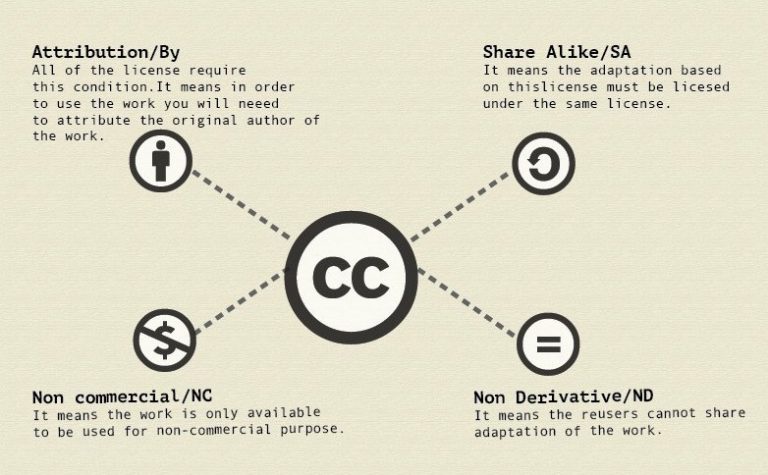
Attribution (BY)
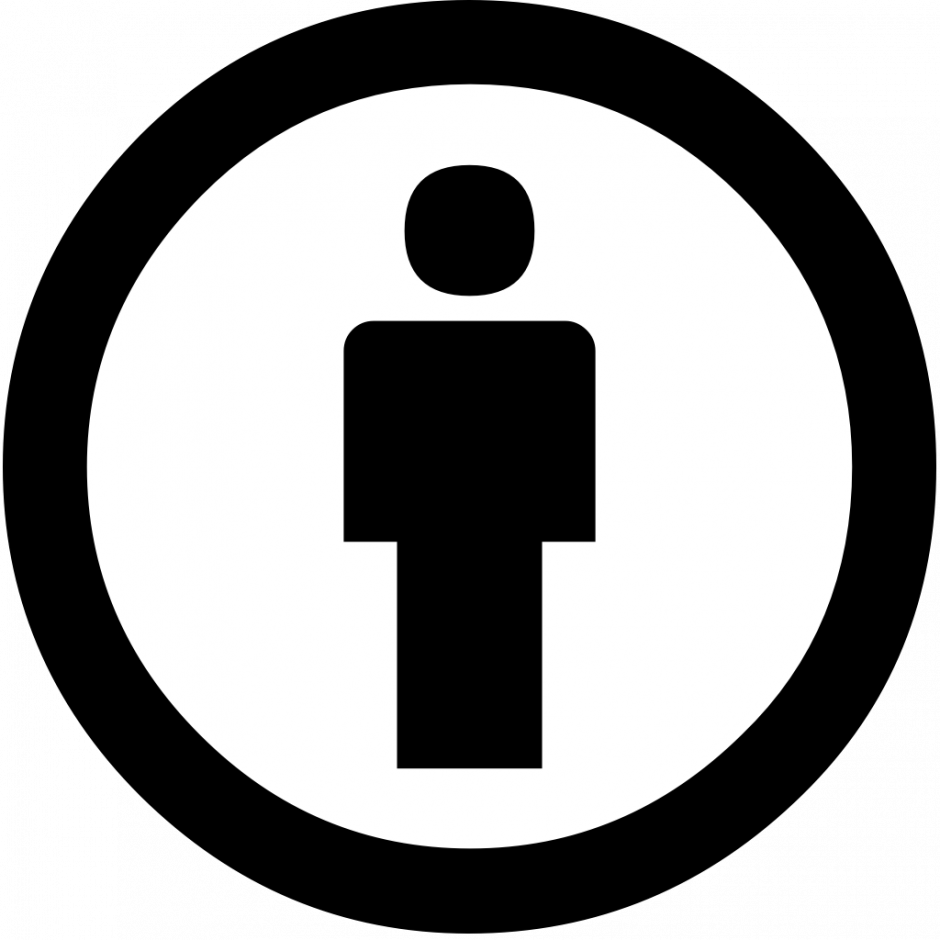
“BY” refers to attribution. This means in order to use the work, you must attribute the author of the work. All of the Creative Commons licenses require this condition (CC0 does not, but according to the CC FAQs is it not a “license”).
Share Alike (SA)

Share Alike means that if you create an adaptation of a work that has this license, the adaptation must be licensed under the same or a compatible license. See the Creative Commons page on compatible licenses to learn more.
NonCommercial (NC)

NC means that the work may only be used for non-commercial purpose. In NC licenses, non-commercial is defined as “not primarily intended for or directed towards commercial advantage or monetary compensation” (see, e.g., CC BY-NC 4.0). What matters here is the use to which the work is being put, not the user: one has to consider whether the use is for a commercial purpose, not whether the user is a commercial entity. A for-profit company could possibly use a work licensed CC BY-NC in a non-commercial way. In addition, using the work in a tuition-based educational course may still be considered a non-commercial use. The definition of “non-commercial” in these licenses is somewhat vague, and while some uses are clearly commercial and others clearly not, some may be in more of a grey zone. Find more information on how Creative Commons interprets non-commercial use on the CC Wiki.
No Derivatives (ND)

ND means that you cannot share an adaptation of the work, though you could use and share it in its original form. An example of an adaptation of an image would be changing its colour, blurring it, or adding another image on top of it. An example of an adaptation of a written work would be translating it to a different language. The points below, adapted from section 3.3 of the Creative Commons Certificate for Educators and Librarians, provide more details on what is and is not considered an adaptation:
- Syncing a musical work with a moving image is an adaptation regardless of what applicable copyright law may otherwise provide.
- Technical format-shifting (for example, converting a licensed work from a digital format to a physical copy) is not an adaptation regardless of what applicable copyright law may otherwise provide.
- Fixing minor problems with spelling or punctuation is not an adaptation.
- Reproducing and putting works together into a collection is not an adaptation of the individual works so long as they have not themselves been adapted. For example, combining stand-alone essays by several authors into an essay collection for use as an open textbook is a collection and not an adaptation. Most opencourseware is a collection of others’ open educational resources (OER).
- Including an image alongside text, as in a blog post, a slide, or an article, does not create an adaptation unless the photo itself is adapted.
Six CC licenses
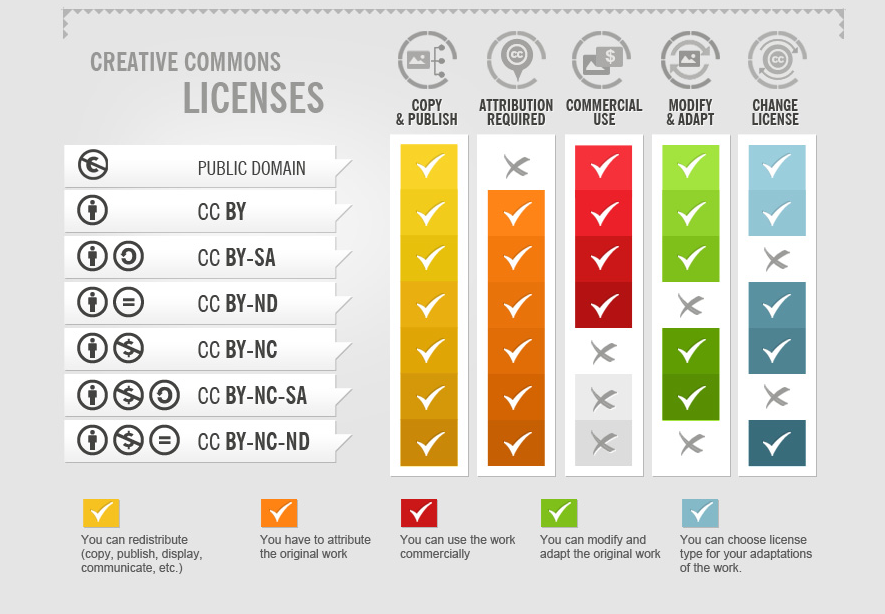
The four elements above can be combined to make up six different licensing options. Note that all CC licenses require attribution, but otherwise the license elements can be combined to allow for or restrict various activities, such as commercial use or adaptation.
Attribution (CC BY)

The CC BY license allows others to reuse, adapt, remix, and and distribute the work for any purpose, including commercial use. The only requirement is that the work or adaptation must be shared with attribution to the creator.
Attribution Share Alike (CC BY-SA)

The CC BY-SA license allows others to reuse, adapt, remix, and distribute the work for any purpose, including commercial use. It requires attribution to the creator, and also that if you adapt the work and share it you must give your adaptation the same or a compatible license.
Attribution NonCommercial (CC BY-NC)

The CC BY-NC license allows others to reuse, adapt, remix, and redistribute the work for any non-commercial purpose; commercial use of the work is not allowed. Attribution to the work’s creator must be provided.
Attribution NonCommercial Share Alike (CC BY-NC-SA)

The CC BY-NC-SA license allows others to reuse, adapt, remix, and distribute the work for any non-commercial purpose; commercial use of the work is not allowed. In addition, if you adapt the work and share it you must give your adaptation the same or a compatible license. Attribution to the work’s creator must be provided.
Attribution NoDerivatives (CC BY-ND)
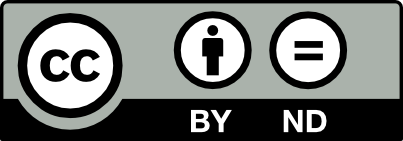
The CC BY-ND license allows others to reuse and distribute the work in an unadapted form for any purpose, including commercial use; adaptations are not allowed (see above under the ND license element for more about what counts as an adaptation). Attribution to the work’s creator must be provided.
Attribution NonCommercial NoDerivatives (CC BY-NC-ND)

The CC BY-NC-ND license allows others to reuse and distribute the work in an unadapted form for non-commercial purposes; neither commercial use or adaptation is allowed. Attribution to the work’s creator must be provided.

Dig Deeper
If you are at UBC, please see the UBC Copyright Office’s information on fair dealing, and compare with what the various CC licenses allow, as explained in the next section: What are the different types of Creative Commons Module?.
Public Domain Dedication (CC Zero)

Aside from the six types of Creative Commons license, Creative Commons also provides a public domain dedication tool, CC0, which is a way to relinquish all copyright and mark one’s work as being in the public domain. The public domain consists of all the creative work to which no exclusive copyright or intellectual property rights apply. Some countries do not allow creators to dedicate their work to the public domain through a waiver or abandonment of copyright rights, so CC0 includes a “fall back” license that allows anyone in the world to do anything with the work unconditionally.
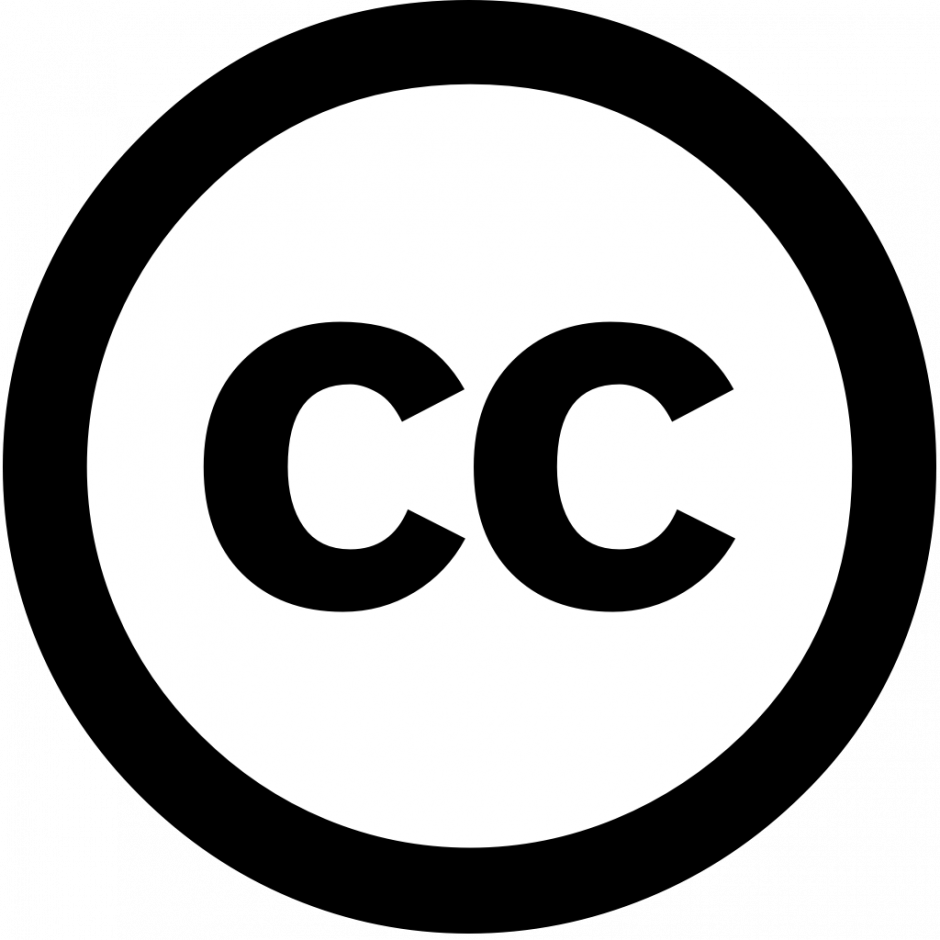
Test your knowledge of CC licenses

Dig Deeper
If you are at UBC, please see the UBC Copyright Office’s information on fair dealing, and compare with what the various CC licenses allow, as explained in the next section: What are the different types of Creative Commons Module?.
Adapted from The Creative Commons Certificate for Educators and Librarians section 3.3: License Types from Creative Commons under CC by 4.0 license. Image credit: The license types logos, and the CC logo, are from the Creative Commons downloads web page, used under the CC Trademark Policy.
